Kick the Visionary Upstairs
One of the superpowers of the Entrepreneurial Operating System (EOS) is making the distinction between the roles of the “Integrator” and those of the “Visionary”.
Who is the Integrator
The Integrator is the person who runs the business. He or she makes sure all executives work together as harmoniously as possible, keeps leaders on task and is responsible for executing the business plan and reaching the business’ financial goals. The integrator also often handles special projects that are in nobody’s wheelhouse on the executive team and thus are hard to delegate, while critical for the progress of the company.
The Integrator, at his best, is a highly organized individual who thrives on building processes, has a sense of urgency and makes decisions primarily on logic. This allows him to make daily decisions consistently and be disciplined in execution. In my experience, it also helps if the Integrator doesn’t have controlling ownership in the business, as it reduces his temptation to get excited and pursue pet projects that go nowhere, just “because he can”.
Who is the Visionary
Contrast the Integrator with the Visionary. The Visionary is typically the founder or controlling owner, who has the power to screw things up and, in many companies, ends up exercising that unalienable right.
The Visionary runs mainly on emotion and gets excited by ideas and relationships. These are great attributes, that allow her to conceive of the business in the first place, create a compelling vision to attract great employees and key customers and be a great builder of relationships with partners, clients and associates alike. At her best, the Visionary is a creative and driven genius, that everyone wants to follow and emulate.
The Downside of Visionaries
Unfortunately Visionaries also come with a downside. Because they live in a world of ideas and relationships, they often get stuck in the clouds and will say YES too often for the business to stay disciplined. Visionaries find it hard to stick to their knitting and will always be on the lookout for the Next Big Thing, which requires trying things while distracting the company from executing on its core business. They are the kid in the candy store, enjoying the thrill of having the company as a lab, where they have the power to experiment with whatever ideas they dream up (or bring back from their Vistage group) that week.
Unfortunately, labs are cost centers and will not make money on their own. Money is made with the products that come out of the lab, marketed, sold and delivered on a consistent basis to paying customers. If the captain stays in the engine room, her ship will eventually run aground.
Since they thrive on relationships, visionaries also hate to say NO to things and people. That includes chasing new projects (Shiny Object Syndrome) of which the business has limited capacity to absorb and getting people around them excited about ideas and projects, most of which has little chance of being executed on. They thrive on the positive energy of these discussions and will try to keep the people that engage with their ideas around, whether they are useful or not. This behavior will suppress prioritization (“everything is important”) and stretch resources and depress profit margins.
To sum it up, Visionaries are like medicine. They can create miracles in small doses but kill in concentration. Visionaries need an integrator who will keep them in check and on track with the business plan. A good Integrator will keep the Visionary out of the daily operation of the business and let him stay in the lab and come up with great ideas and build great relationships. Meanwhile, the Integrator, thus unimpeded, will make sure the priorities get executed on by the team without undue distraction.
Unfortunately, most Visionaries fight against being kicked upstairs by their company as they fear they would become less needed (less loved?) as a result. After all, they went into business to be in control and to feel successful, in the first place. They can find it challenging to visualize how they could be as or even more relevant in their new role as Visionaries.
Enlightened Visionaries embrace the division of labor with their Integrator, as it allows them to avoid the “boring minutia” of running the day-to-day, at the small price of not making all the decisions themselves. Most actually enjoy, having less on their shoulders, as it empowers them to spend more time at the strategic level. This dynamic also relieves them from having to be that bad guy and allow them to eventually build even more great relationships and enjoy financial success.
